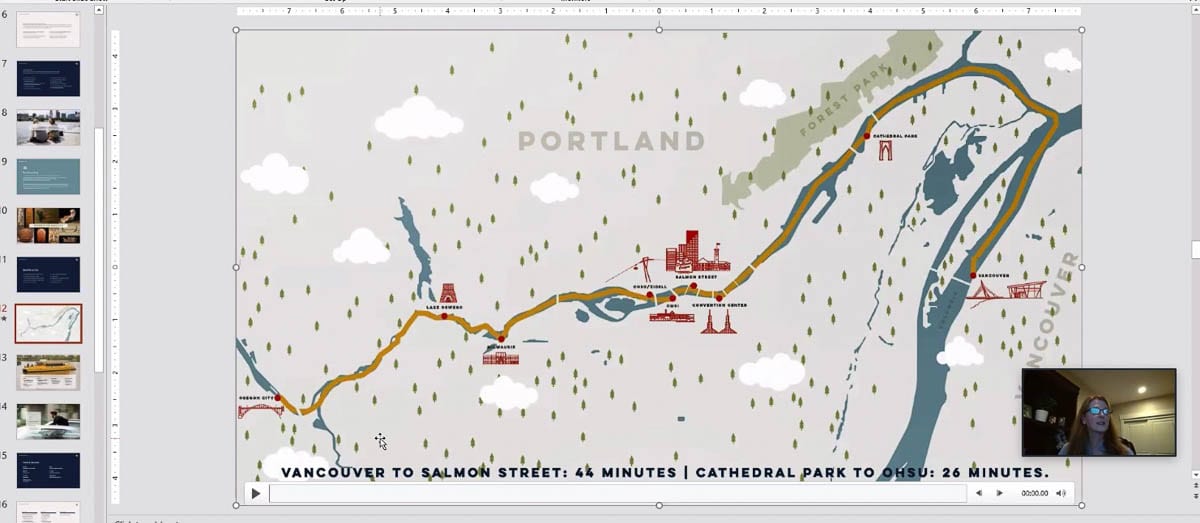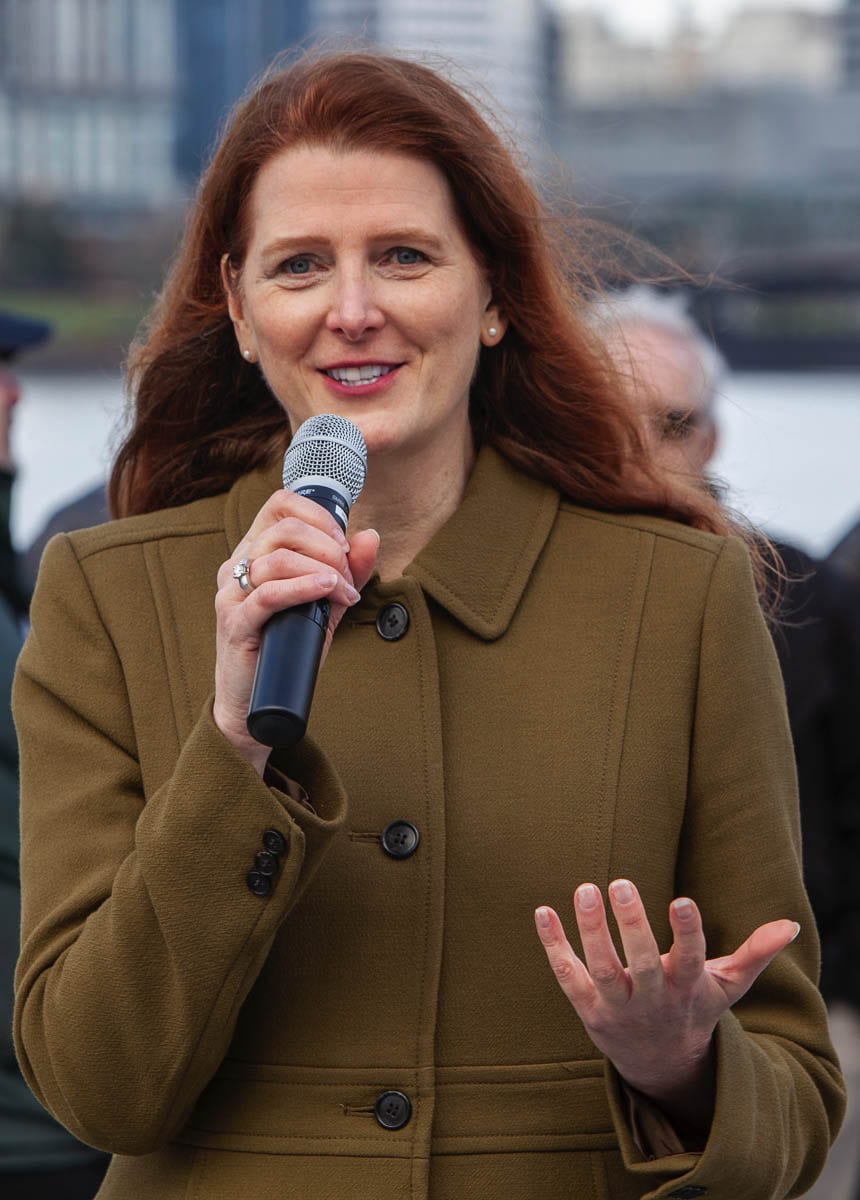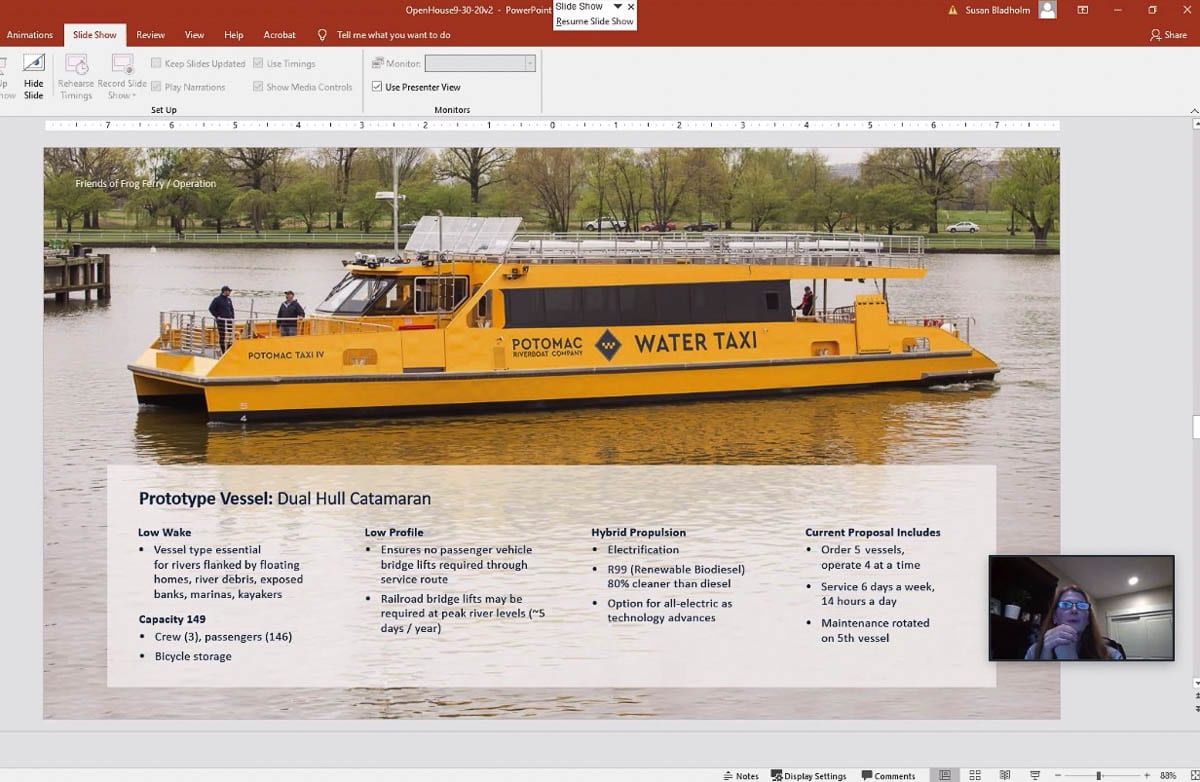Through pandemic months ferry organization has continued support growth
VANCOUVER — Friends of Frog Ferry (FFF), a nonprofit group out of Portland, is preparing to enter the next phase of their efforts to bring a passenger ferry service to the Columbia and Willamette rivers.
From Vancouver to Oregon City, the nine stops on the proposed Frog Ferry could be made possible if FFF secures a public entity partnership along with their dozens of stakeholders and supporting organizations.

In an online Zoom open house on Sept. 30, FFF Founder and President Susan Bladholm, along with fellow board member and FFF Director James Paulson, delivered an update on the state of the project and organization through the last several months of the pandemic.
In addition to the update, the group discussed a community benefit plan, which included information gathered from several groups along both rivers in Clark County and in Oregon.

“We really did a lot of outreach on this invitation to ensure we’re hearing you and your voices as part of this,” Bladholm said. “Candidly, the water side and the vessel side is the easier part of the equation. The interface with the land side is where it gets far more complex.”
To date, FFF has raised $750,000 as well as secured $4.1 million in pro bono services. Over the past three years, but mainly in 2019, those funds have gone, in part, to conducting three different feasibility studies.
The first study focuses on six other ferry systems around the world which have similarities with the Portland-Vancouver market. The second, focused on demand modeling for a ferry service, and did so in collaboration with other transit providers, including TriMet. The third study, which will be delivered at a press conference on Oct. 20, focused on operational feasibility.
A boat builder, who will likely be announced in October, has agreed to design a vessel for the group to use with their pilot project, which is slated to begin in 2022. By the end of the year, the organization hopes to have secured a public entity partner to qualify for federal grants. In 2021, the group plans to solicit funding to begin the process of infracture, like docks.
“Bottom line here, we simply believe that the status quo … is simply not matching up with our transit needs and that we need more choices and we need to take advantage of our river system,” Bladholm said. “We know commuter ferries are a proven worldwide concept. We know we have an issue with traffic even with COVID, in the midst of a pandemic. And we know that the Portland area is traditionally in the top 15, in terms of the worst traffic congestion in the nation, let alone our declining air quality.”
If the group’s desired plan for the type of vessel is successful, a passenger ferry service could open as soon as 2024, with vessels capable of transporting nearly 150 people per ferry. A ferry commute from Vancouver’s new waterfront park to Salmon Street in downtown Portland, would be just under 45 minutes; 15 minutes faster than other forms of existing transit, such as buses.
Ferries themselves would likely be catamaran, dual-hull in style, and hybrid powered with an electric motor and R-99 biodiesel engine. The vessels would be low profile so as to not require any passenger vehicle bridge lifts, and the group’s desired purchase of five would allow four to run at all times with one as a backup.
“We want to be connecting more people to the rivers, and really start fostering a better sense of appreciation and stewardship for the rivers,” Bladholm added.

The group’s target audience for the Frog Ferry service is primarily commuters, but unlike other forms of transit, also includes a large number of tourists, first responders in an emergency and locals. Bladholm explained how field trips of students to OMSI, fans to Blazer games, patients to OHSU, and families taking a ride for enjoyment, are large parts of the model.
In other ferry markets, Bladholm said she has found there to be a 30 to 50 percent increase in use during summer months. Using data from studies and information collected prior to the pandemic, FFF estimates at 80 percent capacity they could have as many as 8,000 passengers per day, and 2.4 million annually.
When it comes to tickets and subsidy, the Frog Ferry is projecting about $5.50 for a one-way ticket, and approximately 50 percent subsidy; 34 percent less than the average Portland transit subsidy.
“When we look at the river, we want to make sure that we understand that this is moving commerce, yes, but it’s really moving people,” Paulson said. “For people to access jobs, for employers to get people to work. When we look at the number of people who live in Vancouver and work in the downtown area … a huge number of people that are moving north and south up and down the highways. Every year, somewhat quarterly, we want to make sure that we are connecting with the people who would be end users and or affected by the ferry system.”
FFF has conducted various online and in-person open houses, dinners and presentations to neighborhood associations, minority groups and elected officials. To read the first two feasibility studies and find more information on Frog Ferry, visit the organization’s website.




